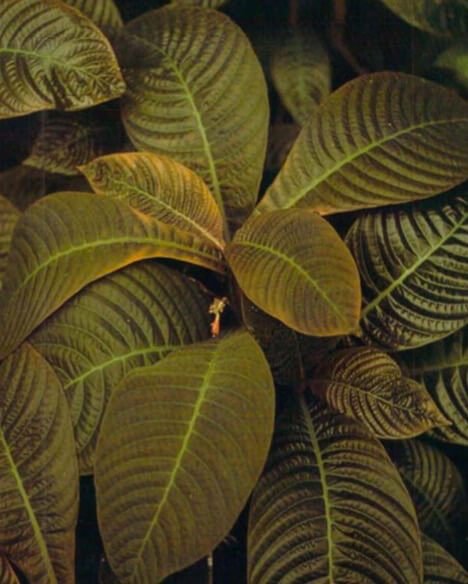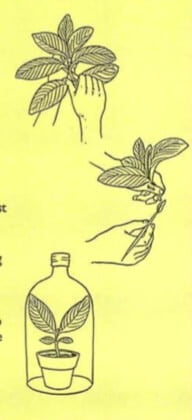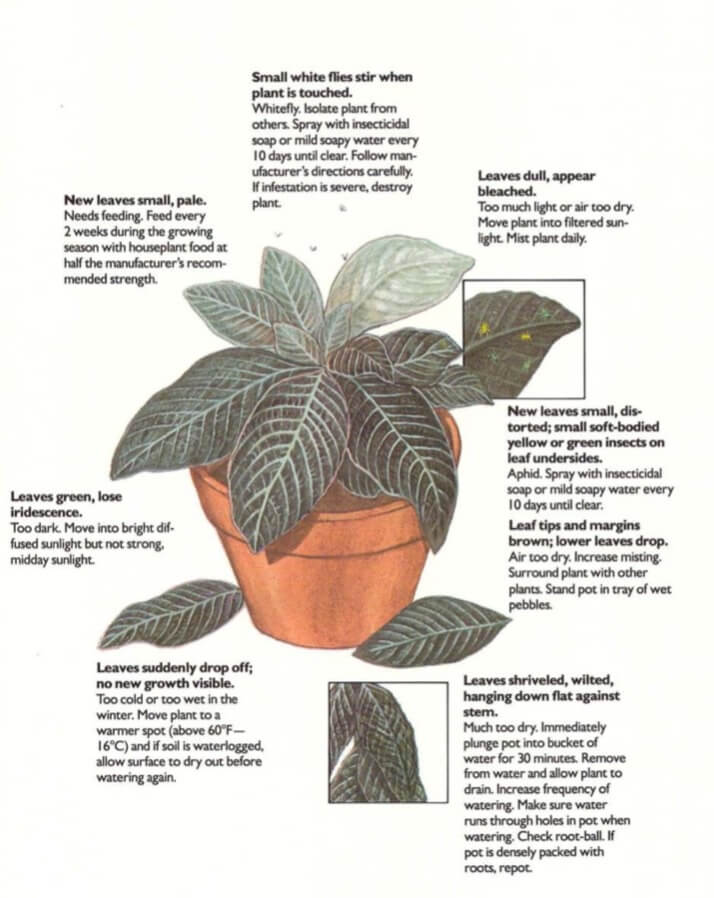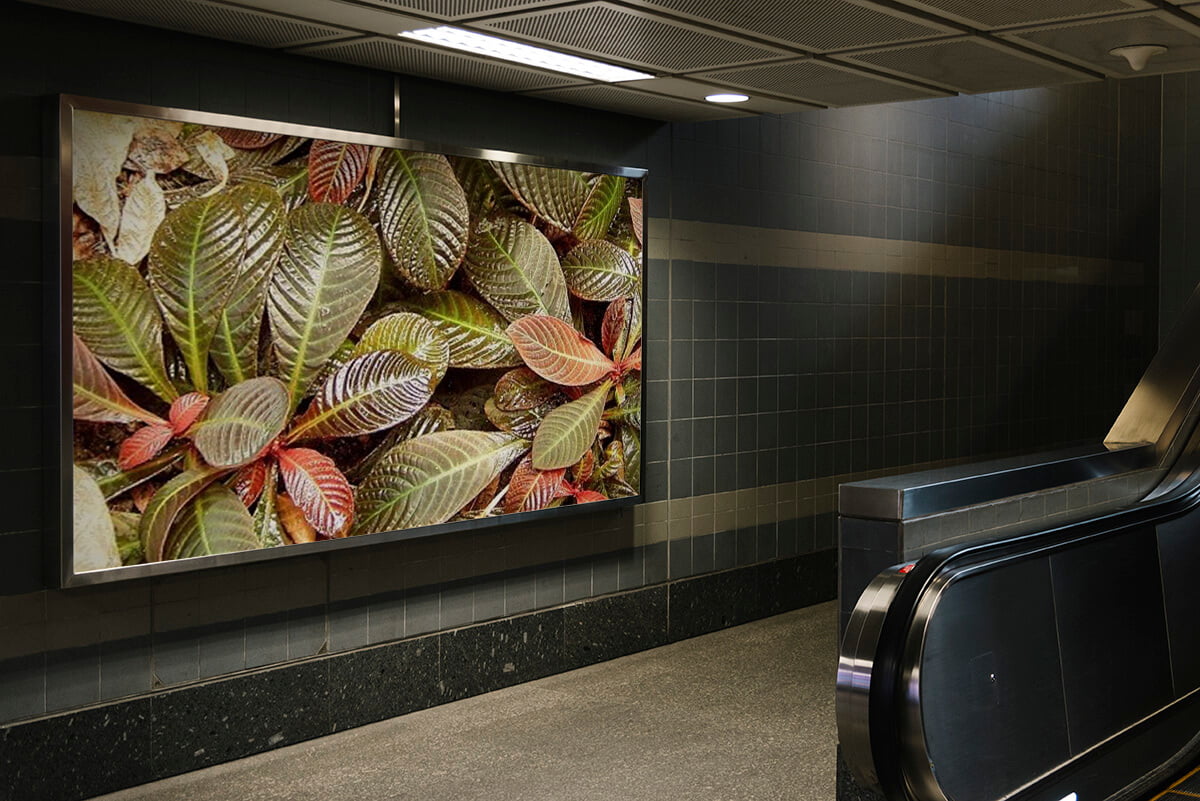[Ebook Việt Hoá] The Instant Guide to Healthy Houseplants (Hướng dẫn tức thời để chăm cây trong nhà khoẻ mạnh), Chi Hoffmannia
[Ebook Việt Hoá] The Instant Guide to Healthy Houseplants: Hoffmannia refulgens (Quilted taffeta plant)
- Nguồn: [Ebook Việt Hoá] The Instant Guide to Healthy Houseplants (Hướng dẫn tức thời để chăm cây trong nhà khoẻ mạnh)
- Biên tập: Dũng Cá Xinh
- Biên dịch: Team Codai.net
English
Stunning foliage is the main attraction of the quilted taffeta plant, originally from tropical Central America. The spatula-shaped leaves are nearly 6 inches (15 cm) long with upper surfaces of iridescent green and lower surfaces of burgundy. Like taffeta, the leaves seem to change color as they reflect the light. The plant usually does not grow to a height of more than 1 foot (30 cm) but sometimes becomes slightly shrubby, and its angular, woody stems can reach up to 3 feet (about 1 m) in height. Tiny rose colored flowers are borne at the joints of the leaves.

Light
Needs bright but filtered light for best leaf color. Shade from direct sunlight.
Temperature
For best growth and leaf color, maintain a temperature range of 67-70°F (18-21 °C) year- round. Plant will tolerate a maximum temperature of 85°F (29°C) or higher if humidity is also increased.
Water
Keep thoroughly moist by watering 3-4 times a week in summer, 1-2 times a week in winter. Allow water to flow from drainage holes.
Soil
Use a well-drained mix of either loam-based or peat- based soil. (A mix of equal parts peat moss, perlite and sand is recommended.)
Humidity
Mist every other day during the summer. Mist early in the day; misting in direct sunlight will damage leaves.
Feeding
Use liquid houseplant food at half the manufacturer’s recommended strength every 2 weeks during growing season.
Repotting
Repot in spring if roots are visible through the holes in the pot or if the soil is depleted. (Depleted, old soil will have a glossy, slimy surface.)
Cleaning
Use a damp cloth or sponge to wipe the leaves clean. Use no leafshine.
Pruning
If plant is tall and straggly and the stem is bare of lower leaves, prune plant to force new shoots or leaves farther down the stem.
- 1. Cut the stem just above a leaf scar with a sharp knife or pruning shears.
- 2. To prevent infection, dust the cut edge with fungicide. Place cut stem in a pot of moist perlite.
- 3. Cover plant with plastic bag or the clear part of a plastic soda bottle. New leaves or shoots will sprout from the lower leaf scars of the stem to create a fuller, more attractive foliage plant.

What Goes Wrong

- Small white flies stir when plant is touched: Whitefly. Isolate plant from others. Spray with insecticidal soap or mild soapy water every 10 days until clear. Follow manufacturer’s directions carefully. If infestation is severe, destroy plant.
- Leaves dull, appear bleached: Too much light or air too dry. Move plant into filtered sunlight. Mist plant daily.
- New leaves small, distorted; small soft-bodied yellow or green insects on leaf undersides: Aphid. Spray with insecticidal soap or mild soapy water every 10 days until clear.
- Leaf tips and margins brown; lower leaves drop: Air too dry. Increase misting. Surround plant with other plants. Stand pot in tray of wet pebbles.
- Leaves shriveled, wilted, hanging down flat against stem: Much too dry. Immediately plunge pot into bucket of water for 30 minutes. Remove from water and allow plant to drain. Increase frequency of watering. Make sure water runs through holes in pot when watering. Check root-ball. If pot is densely packed with roots, repot.
- New leaves small, pale: Needs feeding. Feed every 2 weeks during the growing season with houseplant food at half the manufacturer’s recommended strength
- Leaves green, lose iridescence: Too dark. Move into bright diffused sunlight but not strong, midday sunlight.
- Leaves suddenly drop off; no new growth visible: Too cold or too wet in the winter. Move plant to a warmer spot (above 60°F – 16°C) and if soil is waterlogged, allow surface to dry out before watering again.
Tiếng Việt
Những tán lá tuyệt đẹp là điểm thu hút chính của cây taffeta, có nguồn gốc từ vùng nhiệt đới Trung Mỹ. Các lá hình thìa dài gần 6 inch (15 cm) với mặt trên màu xanh lục óng ánh và mặt dưới đỏ tía. Giống như taffeta, những chiếc lá dường như thay đổi màu sắc khi chúng phản chiếu ánh sáng. Cây thường không phát triển đến chiều cao quá 1 foot (30 cm) nhưng đôi khi trở thành cây bụi và thân gỗ có góc cạnh, có thể cao tới 3 foot (khoảng 1 m). Những bông hoa nhỏ màu hồng nhạt được mọc ra từ khớp của lá.

Ánh sáng
Cần ánh sáng sáng nhưng được lọc qua màng để lá có màu đẹp nhất. Tránh ánh nắng trực tiếp.
Nhiệt độ
Để cây phát triển và màu lá tốt nhất, hãy duy trì khoảng nhiệt độ 67-70 ° F (18-21 ° C) quanh năm. Cây sẽ chịu được nhiệt độ tối đa là 85 ° F (29 ° C) hoặc cao hơn nếu độ ẩm cũng tăng lên.
Nước
Giữ ẩm kỹ bằng cách tưới 3-4 lần một tuần vào mùa hè, 1-2 lần một tuần vào mùa đông. Để nước chảy ra từ các lỗ thoát nước.
Đất
Sử dụng hỗn hợp đất mùn hoặc than bùn thoát nước tốt. (Nên trộn rêu than bùn, đá trân châu và cát bằng nhau.)
Độ ẩm
Phun sương mỗi ngày trong suốt mùa hè. Sương sớm đầu ngày nhưng phun sương dưới ánh nắng trực tiếp sẽ làm hỏng lá.
Bón phân
Sử dụng phân bón hữu cơ dạng lỏng với liều lượng bằng một nửa lượng khuyến cáo của nhà sản xuất 2 tuần một lần trong mùa trồng trọt.
Thay chậu
Thay chậu vào mùa xuân nếu thấy rễ qua các lỗ trong chậu hoặc nếu đất bị cạn kiệt. (Đất cũ bị cạn kiệt sẽ có bề mặt bóng và nhầy nhụa.)
Làm sạch
Dùng khăn ẩm hoặc miếng bọt biển để lau lá cho sạch. Không sử dụng xịt bóng lá.
Cắt tỉa
Nếu cây cao, mọc nhánh và thân cây không có các lá phía dưới, hãy tỉa cây để ép các chồi mới hoặc các lá ở phía dưới thân cây.
- 1. Dùng dao sắc hoặc kéo cắt tỉa để cắt phần thân ngay phía trên vết cắt của lá.
- 2. Để ngăn ngừa nhiễm trùng, hãy phủ lên vết cắt thuốc diệt nấm. Đặt thân cây đã cắt vào một chậu đá trân châu ẩm.
- 3. Đậy cây bằng túi nhựa hoặc phần trong của chai nước ngọt bằng nhựa. Các lá hoặc chồi mới sẽ mọc ra từ các vết cắt lá phía dưới của thân để tạo ra một cây có tán lá đầy đặn và hấp dẫn hơn.

Những vấn đề có thể xảy ra

- Ruồi trắng nhỏ xuất hiện xung quanh cây: Bọ phấn. Cách ly cây với những cây khác. Xịt bằng xà phòng diệt côn trùng hoặc xà phòng nhẹ 10 ngày một lần cho đến khi sạch. Làm theo hướng dẫn của nhà sản xuất một cách cẩn thận. Nếu nhiễm bệnh nặng, tiêu hủy cây trồng.
- Lá xỉn màu, bị phai màu: Quá nhiều ánh sáng hoặc không khí quá khô. Di chuyển cây vào nơi có ánh sáng mặt trời đã lọc qua màng. Phun sương cho cây hàng ngày.
- Lá mới nhỏ, méo mó; côn trùng thân mềm nhỏ màu vàng hoặc xanh ở mặt dưới lá: Rệp. Xịt bằng xà phòng diệt côn trùng hoặc nước xà phòng nhẹ 10 ngày một lần cho đến khi sạch.
- Đầu và mép lá màu nâu; lá dưới rụng: Không khí quá khô. Tăng cường phun sương. Xung quanh trồng với các loại cây khác. Đặt chậu trong khay đá cuội ướt.
- Lá teo tóp, héo rũ, rũ xuống so với thân: Quá khô. Ngay lập tức nhúng chậu vào xô nước trong 30 phút. Vớt khỏi nước và để cây thoát nước. Tăng tần suất tưới nước. Đảm bảo nước chảy qua các lỗ trong chậu khi tưới. Kiểm tra rọ che rễ. Nếu chậu có nhiều rễ, hãy thay chậu.
- Lá mới nhỏ, nhợt nhạt: Cần bón phân. Bón phân 2 tuần một lần trong mùa sinh trưởng với phân bón hữu cơ với liều lượng một nửa so với khuyến nghị của nhà sản xuất
- Lá xanh, mất ánh kim: Quá tối. Di chuyển vào nơi có ánh sáng mặt trời khuếch tán sáng nhưng không mạnh, tránh ánh sáng mặt trời giữa trưa.
- Leaves suddenly drop off; no new growth visible: Too cold or too wet in the winter. Move plant to a warmer spot (above 60°F – 16°C) and if soil is waterlogged, allow surface to dry out before watering again.



